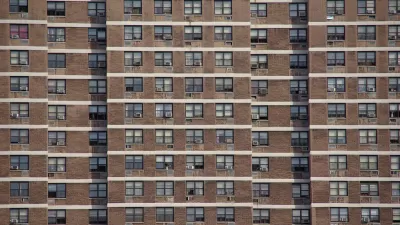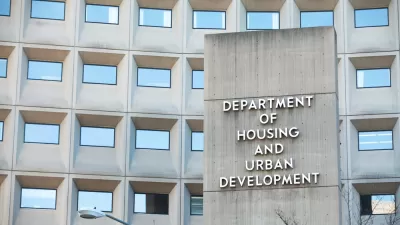For decades, the number of public housing units across the U.S. has been shrinking. But within the limits of the law and funding, HUD has figured out a way to get back some of the housing that has been lost.

In September 2008, Hurricane Ike swept through the Gulf Coast island community of Galveston, Texas, battering the city with 110 mph winds and storm surges that flooded the streets. Three of Galveston’s public housing projects were damaged beyond repair in the storm, resulting in the Galveston Housing Authority demolishing 569 apartments.
More than a decade later, the housing authority is still working to replace every unit that was lost. The agency was set to break ground on a final project in that effort in September. Ironically the ceremony was postponed because another storm, Hurricane Nicholas, was bearing down on the island. But once the project is complete, it will provide the final 174 units of deeply subsidized public housing that were lost to Ike, along with 87 units of moderately subsidized affordable housing and 87 units of market-rate housing.
The new apartments also hold the distinction of being the first in the country to use the U.S. Department of Housing and Urban Development’s (HUD) new Faircloth-to-RAD program, which was rolled out in April of this year in an effort to get public housing authorities the financing they need to build extremely low-income housing.
Combined with the Democrats’ proposal to include $80 billion in funding for public housing’s massive backlog of maintenance needs, there is new energy around public housing in the U.S. and potential for public housing production to get a much-needed boost.
New Public Housing?
Faircloth is a reference to the Faircloth Amendment, a 1998 Congressional amendment championed by North Carolina Sen. Lauch Faircloth that capped the number of public housing units the federal government was allowed to fund. It prohibited HUD from funding construction or operation of any new units beyond the number public housing authorities had in their stock as of Oct 1, 1999. The Faircloth Amendment was meant to bar the expansion of federal public housing. But thanks to decades of disinvestment ...
FULL STORY: New Public Housing? HUD Has Found a Way

Montreal Mall to Become 6,000 Housing Units
Place Versailles will be transformed into a mixed-use complex over the next 25 years.

Planetizen Federal Action Tracker
A weekly monitor of how Trump’s orders and actions are impacting planners and planning in America.

DARTSpace Platform Streamlines Dallas TOD Application Process
The Dallas transit agency hopes a shorter permitting timeline will boost transit-oriented development around rail stations.

Without International Immigrants, the Rural US Population Would Be Falling 58%
Census data shows that population growth in rural areas is due in large part to international migrants.

Dead End: Nine Highways Ready for Retirement
The Freeways Without Futures report describes the nation’s most promising highway removal proposals.

Congressman Proposes Bill to Rename DC Metro “Trump Train”
The Make Autorail Great Again Act would withhold federal funding to the system until the Washington Metropolitan Area Transit Authority (WMATA), rebrands as the Washington Metropolitan Authority for Greater Access (WMAGA).
Urban Design for Planners 1: Software Tools
This six-course series explores essential urban design concepts using open source software and equips planners with the tools they need to participate fully in the urban design process.
Planning for Universal Design
Learn the tools for implementing Universal Design in planning regulations.
City of Mt Shasta
City of Camden Redevelopment Agency
City of Astoria
Transportation Research & Education Center (TREC) at Portland State University
City of Camden Redevelopment Agency
Municipality of Princeton (NJ)
Regional Transportation Commission of Southern Nevada





























